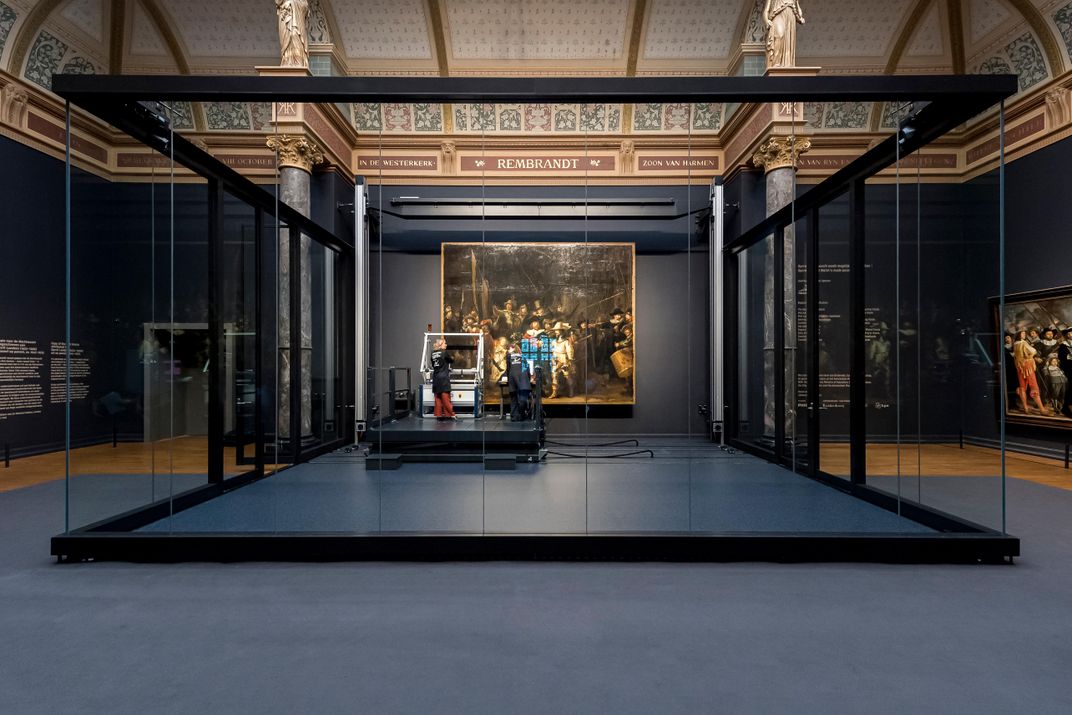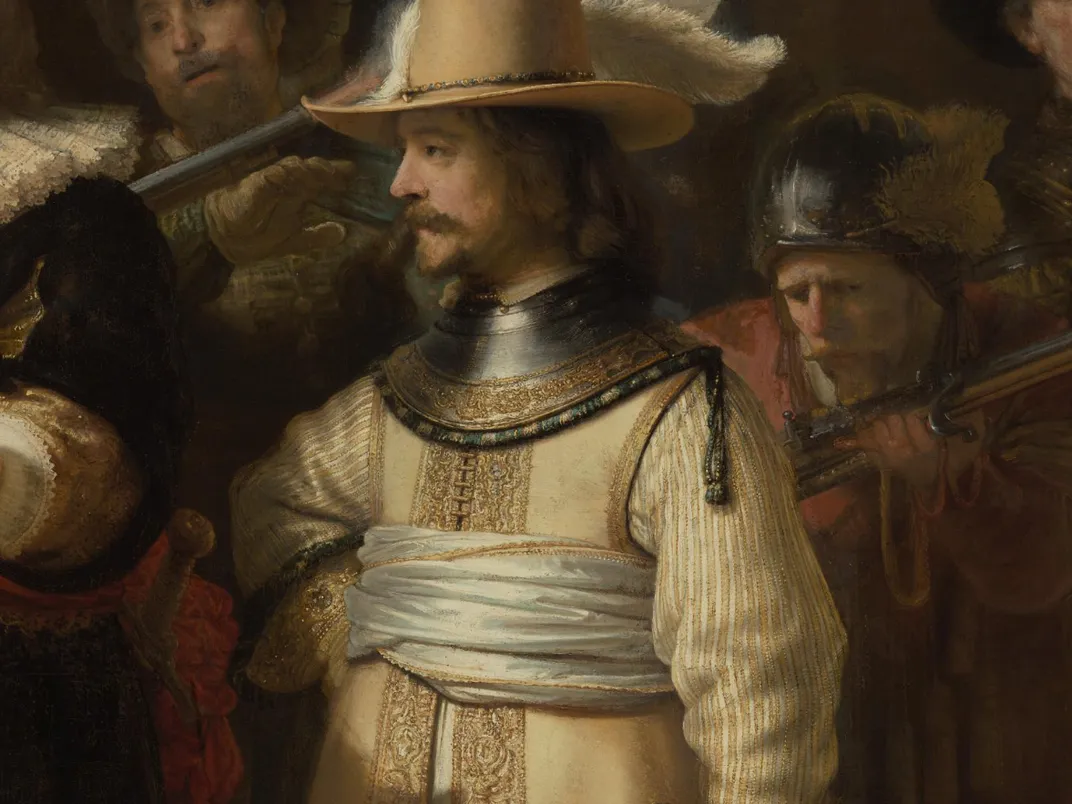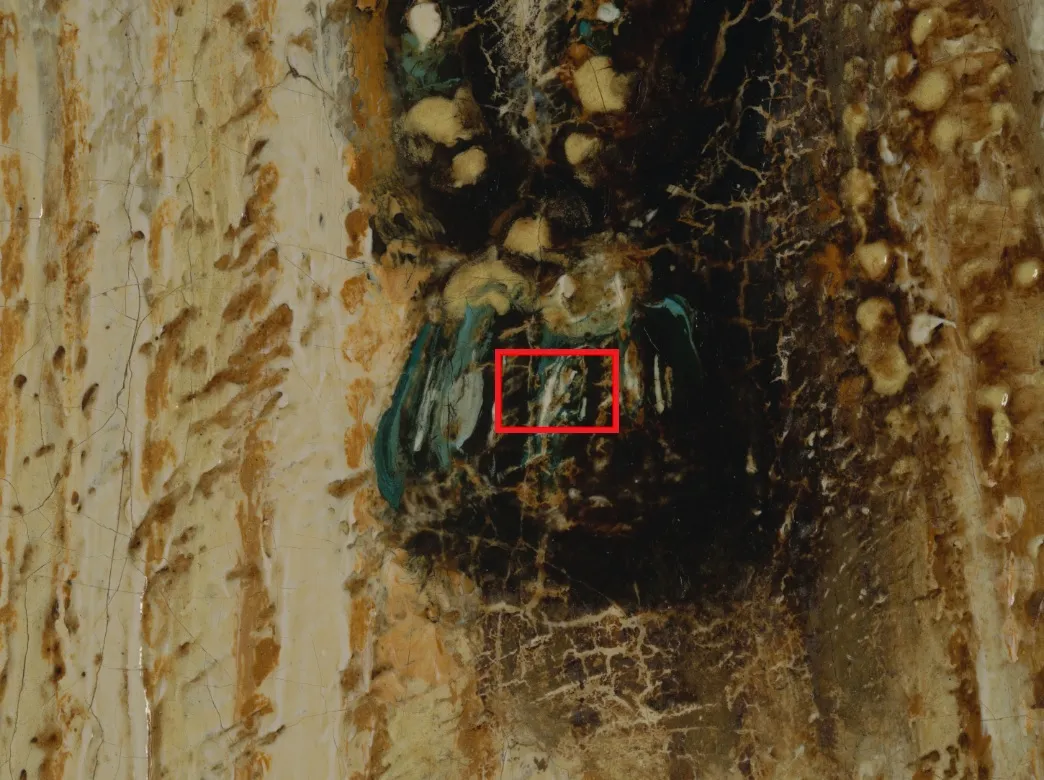Explore a Hyper-Resolution Rendering of Rembrandt’s ‘The Night Watch’ Online
More than 500 individual photographs make up the new image of the Dutch artist’s 17th-century masterpiece
/https://tf-cmsv2-smithsonianmag-media.s3.amazonaws.com/filer/62/5c/625cd4bf-681c-4ecf-9e95-93e979031aca/2020_may14_rembrandt.jpg)
The Amsterdam-based Rijksmuseum has released a giant, hyper-resolution image of what is arguably Rembrandt van Rijn’s most famous painting: The Night Watch. Now available to view online, the 44.8-gigapixel rendering enables researchers and art fans alike to pore over the 1642 masterpiece’s details, from its brushstrokes its cracks and stray paint splatters.
Per a statement, the image combines 528 individual photographs taken over the course of Operation Night Watch, an ambitious research and conservation project first announced in 2018. The high-quality rendering holds 25 times more data than the version of the painting available through Google Arts & Culture, reports Taylor Lyles for the Verge. This level of detail will allow museum experts to continue their research from home amid the COVID-19 pandemic, as well as provide future restorers with a point of comparison when measuring how the painting is aging.
The museum’s team uses “the very latest technologies and continually push[es] the boundaries of what was thought possible,” says Taco Dibbits, director of the Rijksmuseum, in the statement. “The photograph is a crucial source of information for the researchers, and online visitors can use it to admire Rembrandt’s masterpiece in minute detail.”
Operation Night Watch marks the first time the 11-foot-tall, 15-foot-wide painting has undergone restoration since a visitor attacked it with a bread knife in 1975. Some areas where conservators patched the painting back together have started to yellow, and a dog in the corner of the canvas has faded to a ghost of its former self, wrote Brigit Katz for Smithsonian magazine in October 2018.

Experts started restoring The Night Watch in July of last year. Rather than conducting this work behind-the-scenes, the Rijksmuseum opted to place the painting in a glass chamber in the museum’s Gallery of Honor and invite museum visitors to watch the process firsthand. The restoration was also livestreamed online.
So far, the team’s research has provided an array of insights into the work’s creation. The pigments Rembrandt used in the painting, for example, were identified as lead white, smalt blue, red lake and lead-tin yellow. In a video shared on Instagram last summer, painting research scientist Annelies van Loon conducted a macro-fluorescence scan of the painting, shedding light on the tools experts use to arrive at these findings. A full scan of the painting would require 56 frames, each of which takes almost a day to complete.
The Rijksmuseum paused its research phase for two months in response to COVID-19, but work was able to resume yesterday with new social distancing guidelines in place. Normally, the glass chamber houses a team of 12 restorers, but under the new parameters, just two people will be able to work simultaneously, reports Daniel Boffey for the Guardian.
The museum intended to start the second phase of restoration after summer 2020; per the statement, this work has now been delayed until early 2021.
The Night Watch is notable not only for its size, but for its creator’s use of light to highlight specific figures in an action-packed scene. In the painting—officially titled Night Watch, Militia Company of District II under the Command of Captain Frans Banninck Cocq—a captain clad in black instructs his lieutenant to begin marching with a cadre of men.
Thanks to the hyper-resolution image, viewers can now explore details ranging from characters’ facial expressions to the faded outline of a dog and Rembrandt’s use of light in highlighting the captain’s hand, which casts a shadow across his lieutenant’s torso. A close look at the company’s “mascot,” a young girl who appears on the captain’s left, shows the intricacy of her jewelry, her ruffled clothing and a chicken hanging from her belt.
If clicking through the new online offering sparks a desire to learn more about the Dutch artist’s masterpiece, consider checking out the Rijksmuseum’s guided online experience, which walks viewers through The Night Watch’s characters, composition, history and secrets—including a glimpse of a beret-wearing Rembrandt lurking behind two men in the painting’s background.


/https://tf-cmsv2-smithsonianmag-media.s3.amazonaws.com/filer/46/47/4647ee2b-5dfa-4860-8742-204e1b39c812/2020_may14_ghostlydog.jpg)